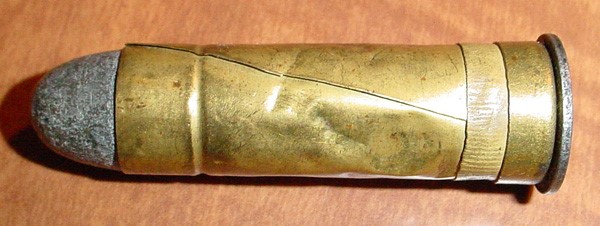The Great-Grandfather to Today’s Breechloading Rifles
The Great-Grandfather to Today’s Breechloading Rifles
By: Drew Joszku
Did you know that the change from percussion muskets and other muzzle loaders to the breechloading rifles of today is thought to have been dramatically moved forward due to a somewhat rare (and now “obscure caliber”) rifle called the “Snider Rifle”? The Snider rifle was the most prominent and first breechloading rifle put into military service by England around 1864. It enabled a military to change previous (and existing) muskets to rifles that would accept cartridges similar to what we have today. While the original cartridges were of rolled brass that were assembled in different parts, they looked very similar and helped build a foundation concerning the movement from having to carry powder, percussion caps and projectiles to the all-inclusive rounds we know today.
Here is what a typical British Snider rifle looks like:

Here is what it originally fired (.577 rolled brass cartridge) in 1864. Please note, it did change to a very similar type of case that we use today in 1867:

Something so interesting to me, as well as a group of other enthusiasts, is that an American named Jacob Snider actually came up with the design and submitted it to the military arms trials for Britain because they were looking to bring their arsenal to up-to-date and among a few designs submitted, his was chosen. His new design could fire many times faster than the newest rifled muskets that were available; namely the .577 Enfield. There was a large need for a stopgap measure because the Enfield rifled musket was only 10 years old so there was a fairly large supply. Rather than scrapping those or selling them off at a possible loss, Snider’s patented design enabled old muskets to be converted to new breechloading rifles by inserting a “shoe” in the front where the lock was located. This allowed a round to be loaded in the breech by putting the hammer at half-cock, opening the cover, placing the round in the chamber and then shutting it. After that, the hammer was pulled to full-cock and then fired. Instead of hitting a percussion cap, the hammer hit a firing pin that was angled to hit the back of a primed cartridge. After firing, the hammer was pulled to half-cock, the breech opened, shell ejected and then the cycle continued. This proved to be much, much faster than loading from the muzzle and was a great way help navigate through the quickly evolving advancements in arms.
While the Snider was an awesome evolution in rifles and the conversion to a self-inclusive “round” of ammunition. There are many people today that still love to fire these because of the history, the interesting challenge of reloading and some find that a projectile almost an inch larger than a .50 caliber one is pretty fun to shoot. If you do pick one of these up, make sure you get them checked out by a gunsmith as these are over 100 years old. While the Snider was a necessary stopgap between muskets and what we know as modern arms today, they did not last too long in military service for Britain but instead were relegated to territories and provinces of the British Empire. The Snider proved to be fairly accurate up to around 50 yards but its successor, the Martini-Henry, proved to have more stopping power at longer distances and was the successor in the 1880’s.
No matter the case, these are beautiful pieces of history that helped us get where we are today concerning the evolution of rifles.
As with all articles on this site related to reloading, these are for informational purposes only. Any and all actions taken by the end user (IE: Reader) are the responsibility of said end user and not the author or website hosting this informal document.
Note: Drew Joszku is an accomplished writer as well as an expert reloader. Some of his articles can also be found on USACarry.

